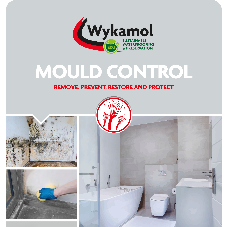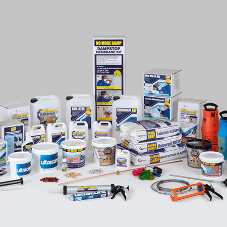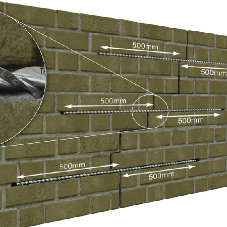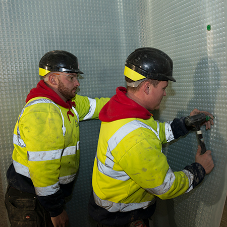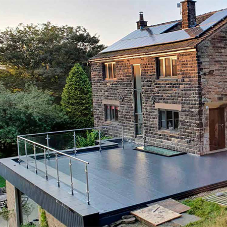Timber Treatment
Triton Systems
Fungal Decay in Building Timbers
Dry rot and wet rot can affect buildings of all ages and if decay is discovered it should be identified and remedial action taken without delay.
Fungal decay occurs in timber which becomes wet for some time and is the result of the attack by one of a number of wood-destroying fungi. The most well known are Serpula lacrymans – the true dry rot fungus -, Coniophora puteana the Cellar fungus and Poria vaillantii the Pore or Mine fungus. Many other fungi also occur and some have recently been particularly linked with decay in door and window frames.
Dry rot is only caused by Serpula lacrymans and is the most serious form of fungal decay in a building. It can spread onto and destroy much of the timber. Wet rot occurs more frequently, but is less serious; decay is typically confined to the area where timber has become and remains wet.
Fungal decay always arises because the wood has become wet, usually timbers will be in excess of 20 per cent moisture content. Finding the source of dampness and eliminating the ingress of moisture and promoting drying is always necessary.
Outbreaks of dry rot and wet rot start in similar ways. The mature fruiting bodies of wood-destroying fungi that develop during an attack produce millions of microscopic spores and these are widely dispersed by air currents. If they fall on untreated damp wood they will germinate by pushing out a hollow tube called a hypha which grows and branches to form a mass of hyphal threads called mycelium.
Mycelium develops inside the timber and breaks down the wood for food. The timber may darken in colour and develop a characteristic cracked appearance. Some wet rots may result in bleaching of the wood; these are more common in doors and window frames. Eventually, the wood loses its strength and in some situations may become dangerously unsafe.
The main differences between dry rot and wet rot are the degree of development of mycelium on the wood surface and the ability of the fungus to spread into other timbers via adjacent masonry. It is important that the two types of decay be distinguished since they require different treatment.
Dry Rot
Serpula lacrymans develops extensively on the surface of infected timber and in still, humid conditions produces a mass of cotton wool-like growth. Water droplets are often produced on the surface of the mycelium.
Mycelium spreads over the timber surface by the continued growth and branching of the delicate hyphal threads growing with time. Specialised strands develop within the mycelium and these supply water and nutrients to the growing fruiting bodies. The strands assume their real significance when the fungus spreads from infected timber onto the surface of adjacent stone or brick walls. The tiny hyphal threads penetrate the mortar joints and plaster layers and large areas of damp wall can then become infected.
Wet Rot
This type of rot is caused principally by Coniophora puteana. Poria vaillantii is another important wet rot fungus and a number of less common fungi also occur. While each fungus has its own unique features, the general appearance of wet rot is similar – as is the treatment. Wet rot is typically confined to the area of dampness because the mycelium does not spread into walls.
Identification and Treatment
It is very important that the type and cause of the fungal decay are correctly identified before any corrective action can be considered. It is for these reasons that it is important that a detailed diagnostic inspection is carried out by a competent specialist. This inspection should be followed by the submission of a report that details both the cause of the decay and the proposed remedial action.


